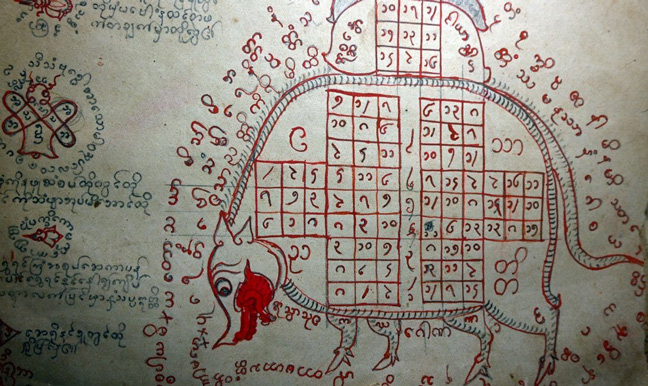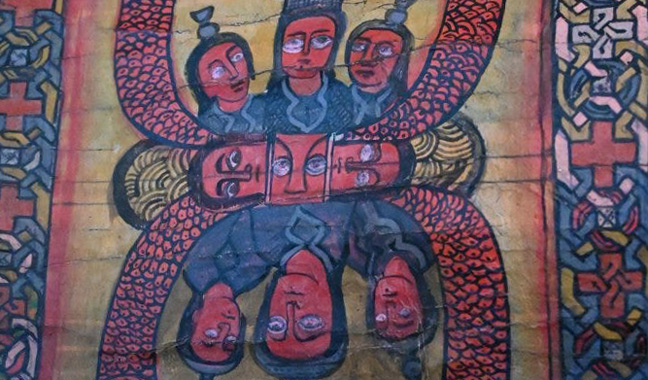
Investigate a World of Visual Culture
Are you hungry to learn the stories behind the art and architecture of the past and present? Gain a critical understanding of the history of art—and an appreciation for cultural diversity that you’ll carry with you into any career—with a BA in Art History at IUP.
Why Major in Art History at IUP?
By its very nature, art history is many-sided, drawing on fields from religious studies to philosophy to economics. You’ll dig into the complex world of art, unearthing the conditions in which artworks were produced as you develop visual understanding and tools for critical thinking. Art history majors at IUP:
- Cultivate crucial skills that you’ll use throughout your life: observation, analysis, critical thinking, and writing.
- Examine art as an intentional, visual language that creates meaning, which you will learn to interpret.
- Learn to analyze artwork that will reveal the cultural, social, and political contexts of art-making and uncover the messages planted in formal elements and expression.
What Will You Learn?
You’ll develop your abilities in:
- Communication
- Critical reading
- Cultural awareness
- Original interpretation
- Paying attention to detail
- Research
- Technology
- Visual analysis
Imagine Your Future
Picture a career working in a museum or gallery. IUP's art history majors have gone on to prestigious institutions including the Andy Warhol Museum, the Smithsonian, the Museum of Modern Art, and the Guggenheim Museum.
The skills you develop from earning an Art History BA will serve you well in any field. Our graduates have also become lawyers, business owners, and senators. Art history is even a requirement in some medical schools.
Demand for curators, museum professionals, archivists, and conservationists is expected to grow 11 percent from 2023 to 2033, much faster than the average, according to the U.S. Bureau of Labor Statistics.
Career Opportunities for Art History Majors
- Appraiser
- Archivist
- Art gallery and museum professional
- College or post-secondary teacher (with PhD)
- Conservationist (with chemistry and art studio studies)
- Curator of private and digital collections
- K–12 teacher (with additional coursework)
Classes and Requirements
The BA in Art History degree program is designed to gradually introduce students to advanced forms of argument, research, and communication.
What You’ll Study
- Begin with coursework that introduces basic vocabulary and concepts, primary research, and analysis.
- Move into survey courses, which place artworks in political, religious, social, historical, and cultural contexts.
- Advance to analysis, research, communication, and interpretation within sound, discipline-specific pedagogical frameworks.
- Discover art from around the world. Courses incorporate works from a range of cultures, including Asian and Native American artworks.
- Explore at the intersections. Because of the interdisciplinary nature of art history, you’ll be encouraged to take courses in anthropology, history, religious studies, and philosophy.
Internships
We encourage you to complete at least one internship—at a gallery, museum, or historical society—to gain practical experience.
Full Academic Catalog Listing
The course catalog is the official reference for all our degree and course offerings. Check it out for a full listing of the classes available and requirements for this degree.
- Loading...

Art History Minor
Gain the necessary skills to critically assess the origins and changing dynamics of the visual arts, no matter your major. The art history minor is also the perfect addition for art students looking to apply to graduate school in this field.
By its very nature, art history is multidisciplinary and not only develops visual literacy and tools for critical thinking but also introduces students to the sociocultural contexts in which artworks are produced, providing students with the opportunities for understanding cultural diversity and lifelong learning.
Full Academic Catalog Listing
The course catalog is the official reference for all our degree and course offerings. Check it out for a full listing of the classes available and requirements for this degree.
- Loading...

Museum Certificate
IUP offers an exciting interdisciplinary Museum Certificate program between the anthropology, history, and art history departments.
Train for a career as an archivist, curator, or related museum professional with the Museum Certificate.
Student Opportunities
As an art major, you will have the opportunity to participate in numerous activities that will further enrich your artistic endeavors.
- Show your work: Put together an exhibit of your own work in Miller Gallery, run by the Student Art Association.
- Absorb and be inspired: Enjoy works by faculty and other national and international artists in exhibitions hosted by IUP galleries and museums.
- Join: New friends are waiting in the Student Art Association, Graphic Design Student Association, Clay Club, IUP Fashion Association, Visual Merchandising Club, American Society of Interior Designers (ASID), IUP Chapter, and other art student organizations.
- Learn how art works: Get an internship.
- Make professional connections: Get involved with the campus chapter of the National Art Education Association or check out the American Society of Interior Designers.
- Change perspective: Study abroad on trips for art students. Contact the Artand Design Department Office for information.
- Teach: Students have the opportunity to teach art classes at the Artists Hand Gallery, in Indiana, Pennsylvania.
- Make your mark: The annual Chalk on the Walk art show turns campus grounds into a beautiful spectacle.
Facilities
Along with museums and galleries, Sprowls Hall is dedicated to seven studio arts, and the 13,000 sq ft Robertshaw building is dedicated to ceramics and sculpture. Learn more about the art facilities at IUP.
Freshman Entrance Portfolio Requirements
Students who have applied to IUP will receive a letter of invitation from the Art and Design Department for a portfolio review.
The goal is to determine whether your portfolio demonstrates potential for success in professional studies in our art program. Your work will be reviewed on the basis of technical, compositional, and creative skill.
Please note, students majoring in Art History or completing a Museum Studies Certificate need not submit a portfolio.
Portfolio Review
Portfolio reviews are an important prerequisite for admission into our degree programs. Students who have applied to IUP will receive a letter of invitation from the Art and Design Department for a portfolio review.
The goal is to determine whether your portfolio demonstrates potential for success in professional studies in our art program. Your work will be reviewed on the basis of technical, compositional, and creative skill.
Prospective students, transfer students, or students who wish to change to an art studio or art education major can submit their portfolio anytime.
The portfolio review process is used to select students for scholarships.
Bringing Talent, Enthusiasm, and Diverse Perspectives
The Art and Design Department at IUP consists of 14 full-time professors. They have earned the highest level of academic degrees for their specialty and bring extensive experience and scholarship to the classroom.
